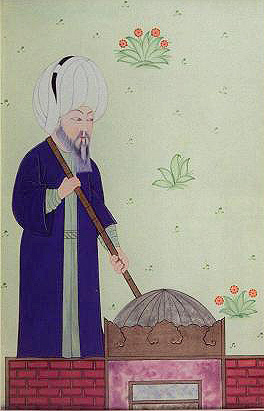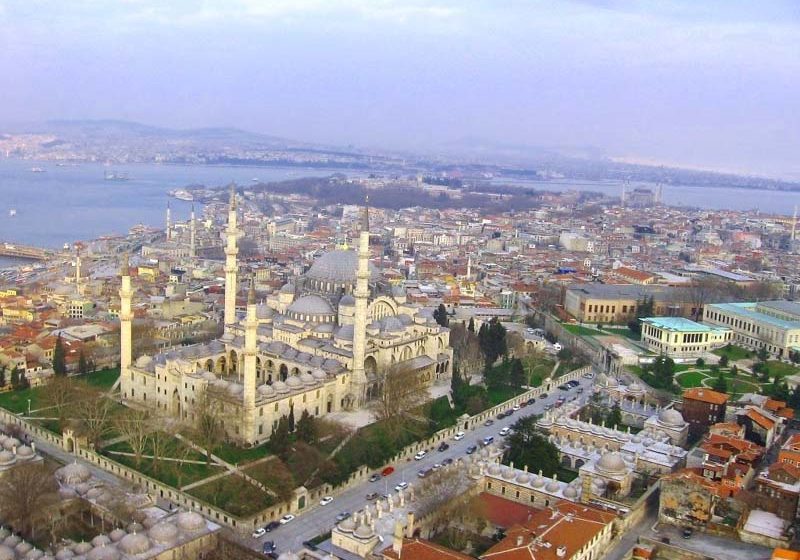Banner: Suleymaniye Mosque (Source)
New Building Methods that Exalted the Heavens
From the Dome of the Rock and the Church of the Holy Sepulchre in Jerusalem, to St. Peter’s Basilica in Rome, Hagia Sophia in Istanbul, and the Taj Mahal in Agra, some of the world’s most memorable buildings are roofed with domes. The Byzantines and Persians were the first to build great domes. But as architects from Muslim civilisation adopted and improved upon them, their popularity and diversity increased.
Domes appealed to many building designers from Muslim civilisation. To them, they symbolized the vault of heaven and the overarching power of God. In mosques, a dome could emphasize a significant area of the building such as the mihrab, a niche in one of the walls indicating the direction of Mecca. Domes appear on churches, palaces, and public buildings as well as mosques, taking different shapes reflecting the local culture.
 Sinan depicted preparing the grave of Suleyman the Magnificent by Nakkash Osman. Repainted by Ilhan Goksen.(Source) Sinan depicted preparing the grave of Suleyman the Magnificent by Nakkash Osman. Repainted by Ilhan Goksen.(Source) |
Born in 1489, Sinan started out as a humble stonemason and carpenter, learning his father’s trade. But he went on to become chief architect in the Ottoman Empire, a coveted role he held during the reign of three sultans. He designed and built more than 470 buildings in his lifetime, developing techniques to construct taller and wider domed roofs than had ever been seen before. Sinan designed and built impressive schools, mosques, and public buildings, approaching his work with an eye for harmony between architecture and the landscape. His work appeared in Damascus, Mecca, Bosnia, and elsewhere, but perhaps his most impressive building is his last, the Selimiye Mosque in Edirne, Turkey.
How much did the architecture of Muslim civilisation influence other cultures? In the domes, arches, and towers of buildings across the world, we see strong echoes of ideas that developed and grew in Muslim lands. Travel and trade increased the interchange between nations, spreading new architectural ideas through fashion or because the ideas offered practical ways for constructing larger or stronger buildings.
Onion-shaped domes are well known today in Russian Orthodox churches and were particularly popular throughout the Mughal Empire in India. In the mid-17th century, Sir Christopher Wren drew consciously on Islamic architecture influences when he designed St. Paul’s Cathedral in London, with its combination of dome and towers.
Domes form part of the fairy-tale appearance of the Sea Cathedral in Kronstadt, near St. Petersburg, built in 1913. The Kremlin in Moscow is also topped with domes. Brighton’s Royal Pavilion, designed by John Nash in 1815 for the Prince Regent, features the bulbous onion domes that had been popular throughout the Mughal Empire in India.
Get the full story from 1001 Inventions: The Enduring Legacy of Muslim Civilization Reference (4th Edition) Annotated.
www.amazon.co.uk/1001-Inventions-Civilization-Reference-Annotated-ebook/dp/B0775TFKVY/
 Sinan and the Selimiye Mosque on the reverse of the Turkish 10,000 lira banknote of 1982-1995 (Source)
Sinan and the Selimiye Mosque on the reverse of the Turkish 10,000 lira banknote of 1982-1995 (Source)


